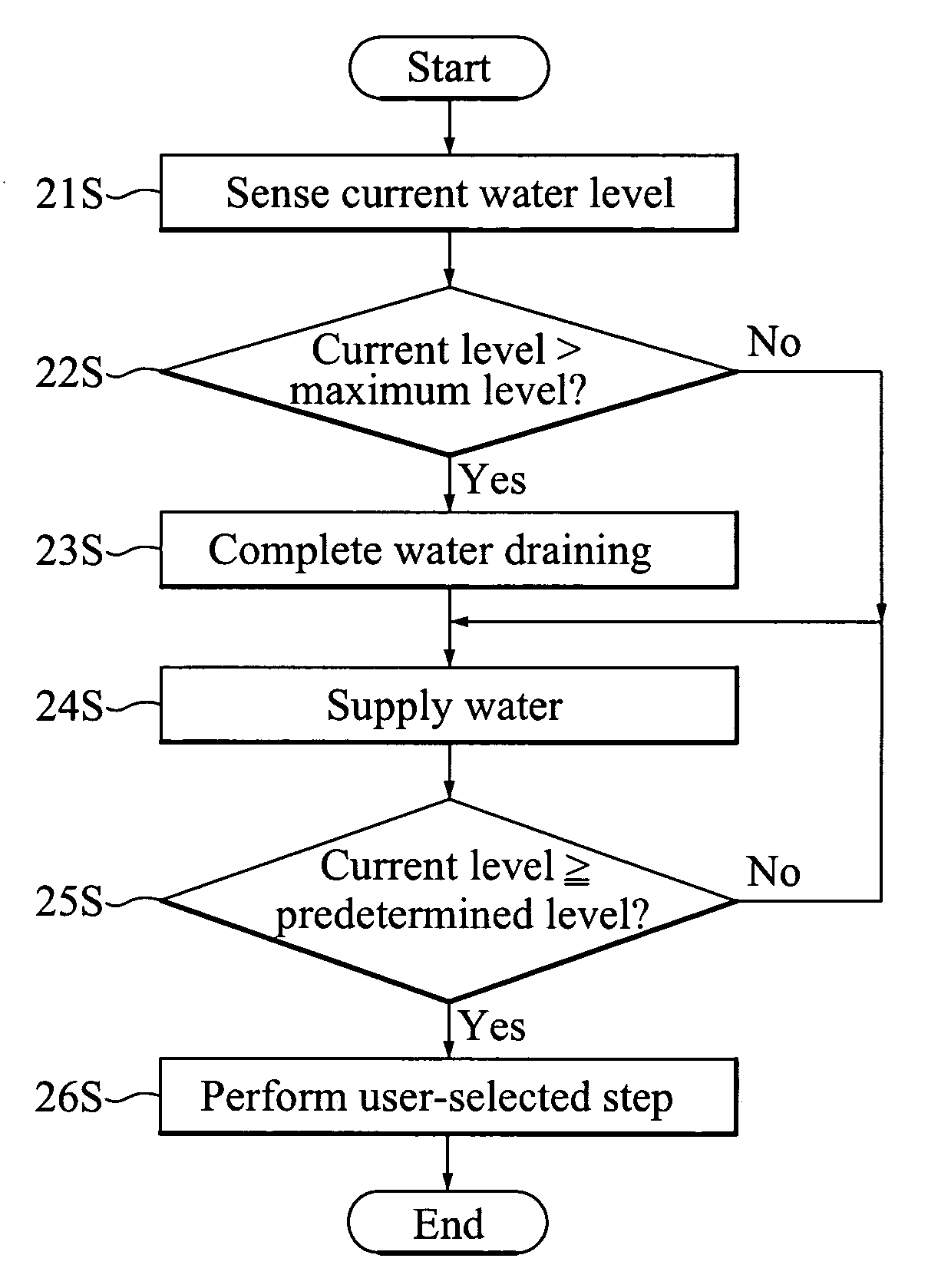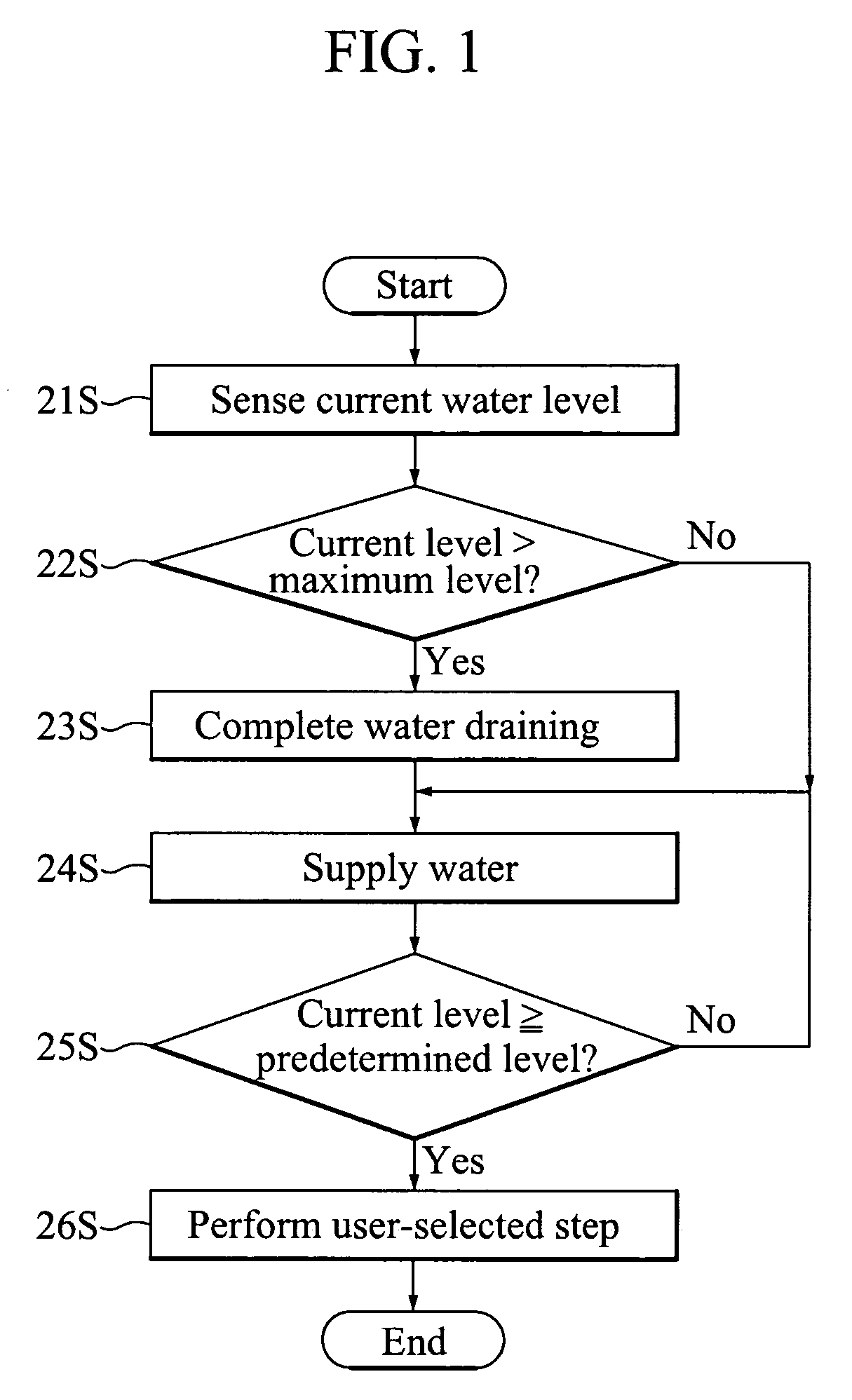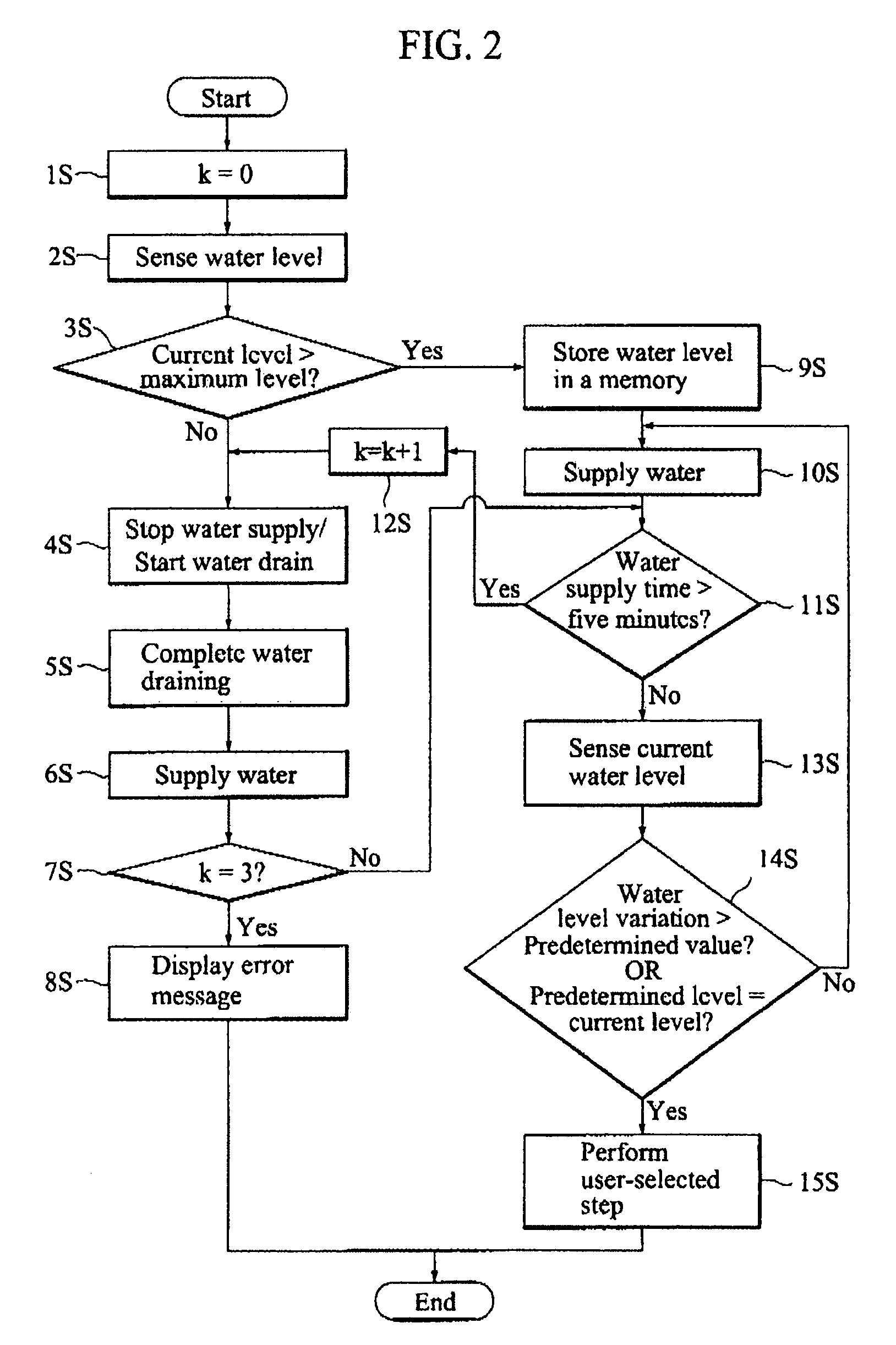Washing machine control method
- Summary
- Abstract
- Description
- Claims
- Application Information
AI Technical Summary
Benefits of technology
Problems solved by technology
Method used
Image
Examples
first embodiment
[0021]Referring to FIG. 1, a method according to the present invention is comprised of a step 21S for sensing a current water level in a washing machine, a step 22S for determining whether the sensed level exceeds a predetermined maximum level, a step 23S for completely draining the washing machine, a step 24S for supplying water to the washing machine, a step 25S for determining whether the sensed level has reached a predetermined level for executing a user-selected step, and a step 26S for executing the user-selected step.
[0022]In detail, the washing machine is turned on, and it is first determined whether water remains in the washing machine, by sensing a current water level (21S) to determine whether the current water level exceeds a predetermined maximum level (22S). If so, draining is performed to discharge the remaining water completely (23S). If, on the other hand, the current water level is lower than the predetermined maximum level water amount, it is determined that optim...
second embodiment
[0027]Accordingly, in the present invention, a water re-supplying step is performed anew only if the water level initially exceeds a predetermined substantive amount and a draining step is interrupted by a siphonic phenomenon. Hence, the use of an amount of water remaining in the washing machine is possible, and an unnecessary draining of water is prevented.
[0028]By adopting the washing machine control method according to the present invention, a substantive level of water is detected in a washing machine having no anti-siphoning device, the remaining water is completely discharged, and then a water supplying step is executed, thus preventing a siphonic phenomenon resulting in an unnecessary wasting of water due to a counterproductive action of simultaneously supplying and draining water. As an alternative, the water supplying step may be executed immediately if substantive amounts of water remain, through a determination of whether a siphonic phenomenon is present by simultaneously...
PUM
 Login to View More
Login to View More Abstract
Description
Claims
Application Information
 Login to View More
Login to View More - R&D
- Intellectual Property
- Life Sciences
- Materials
- Tech Scout
- Unparalleled Data Quality
- Higher Quality Content
- 60% Fewer Hallucinations
Browse by: Latest US Patents, China's latest patents, Technical Efficacy Thesaurus, Application Domain, Technology Topic, Popular Technical Reports.
© 2025 PatSnap. All rights reserved.Legal|Privacy policy|Modern Slavery Act Transparency Statement|Sitemap|About US| Contact US: help@patsnap.com



